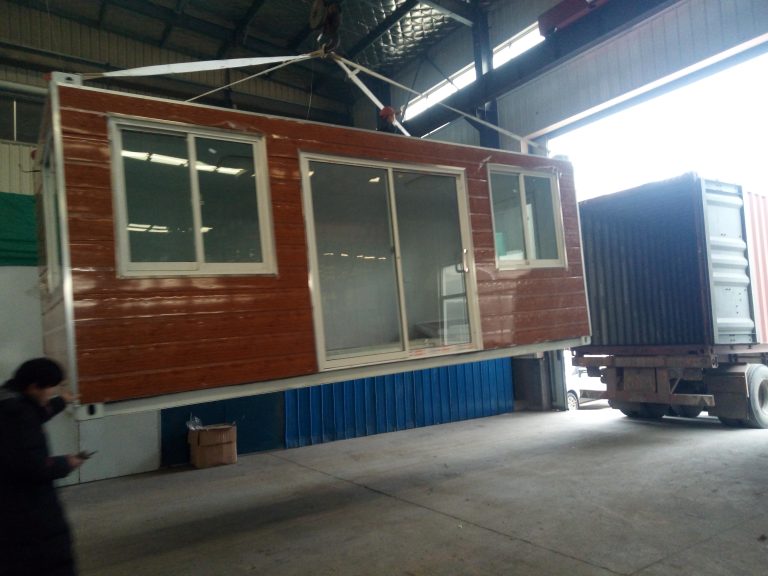Application and hygienic requirements of container house in medical facilities
Table of Contents
Advantages of Using Container Houses in Medical Facilities
Container houses have gained popularity in recent years due to their versatility, cost-effectiveness, and sustainability. These structures, made from repurposed shipping containers, have been used in various industries, including healthcare. In medical facilities, container houses offer numerous advantages, from providing temporary housing for medical staff to serving as mobile clinics in remote areas. In this article, we will explore the application and hygienic requirements of container houses in medical facilities.
One of the key advantages of using container houses in medical facilities is their flexibility. These structures can be easily transported and assembled, making them ideal for setting up temporary medical facilities in disaster-stricken areas or remote locations. In emergency situations, such as natural disasters or pandemics, container houses can be quickly deployed to provide much-needed medical services to affected populations.
Furthermore, container houses are cost-effective compared to traditional brick-and-mortar buildings. Medical facilities often have limited budgets, and container houses offer a more affordable alternative for expanding or upgrading existing facilities. By repurposing shipping containers, healthcare providers can save on construction costs while still meeting the necessary hygiene and safety standards.
In terms of hygiene, container houses can be customized to meet the specific requirements of medical facilities. Proper ventilation, insulation, and plumbing systems can be installed to ensure a clean and sanitary environment for patients and medical staff. Additionally, container houses can be equipped with medical-grade flooring, walls, and fixtures to prevent the spread of infections and maintain a sterile environment.

When it comes to waste management, container houses can be designed to meet the waste disposal needs of medical facilities. Separate areas can be designated for storing and disposing of medical waste, ensuring compliance with regulations and minimizing the risk of contamination. By incorporating waste management systems into the design of container houses, healthcare providers can maintain a safe and hygienic environment for patients and staff.
Another advantage of using container houses in medical facilities is their sustainability. Shipping containers are durable and long-lasting, making them an eco-friendly option for healthcare providers looking to reduce their carbon footprint. By repurposing containers instead of building new structures, medical facilities can contribute to environmental conservation and promote sustainable practices within the healthcare industry.
In conclusion, container houses offer numerous advantages for medical facilities, from their flexibility and cost-effectiveness to their hygiene and sustainability. By customizing container houses to meet the specific needs of healthcare providers, these structures can serve as temporary clinics, housing for medical staff, or storage facilities for medical supplies. With proper planning and design, container houses can help improve access to healthcare services in remote areas, emergency situations, and underserved communities. As the demand for innovative and cost-effective solutions in healthcare continues to grow, container houses are poised to play a crucial role in meeting the evolving needs of medical facilities around the world.
Importance of Meeting Hygienic Requirements in Container House Design for Medical Facilities
Container houses have gained popularity in recent years due to their versatility, cost-effectiveness, and sustainability. These structures, made from repurposed shipping containers, can be used for a variety of purposes, including housing, offices, and even medical facilities. When it comes to medical facilities, however, there are specific hygienic requirements that must be met to ensure the safety and well-being of patients and staff.
One of the most important aspects of designing a container house for medical use is ensuring that it meets all necessary hygienic standards. This includes using materials that are easy to clean and disinfect, as well as designing the layout in a way that minimizes the risk of contamination. In a medical setting, cleanliness is of the utmost importance, as any lapse in hygiene could lead to the spread of infections and diseases.
When designing a container house for medical use, it is essential to consider the layout and flow of the space. The design should allow for easy movement of patients, staff, and equipment, while also providing separate areas for different functions, such as patient examination, treatment, and recovery. Additionally, the layout should include designated areas for handwashing and waste disposal to prevent the spread of germs.
In addition to the layout, the materials used in the construction of the container house are also crucial in meeting hygienic requirements. It is important to choose materials that are non-porous and easy to clean, such as stainless steel, laminate, and vinyl. These materials are resistant to bacteria and can be disinfected regularly to maintain a clean and sanitary environment.
Furthermore, proper ventilation is essential in a medical facility to prevent the buildup of airborne contaminants. When designing a container house for medical use, it is important to include adequate ventilation systems that can remove stale air and circulate fresh, clean air throughout the space. This will help to reduce the risk of airborne infections and create a healthier environment for patients and staff.
Another important consideration when designing a container house for medical use is the plumbing system. Proper plumbing is essential for maintaining hygiene in a medical facility, as it ensures the safe disposal of waste and prevents the spread of germs. The plumbing system should be designed to meet all relevant regulations and standards, and regular maintenance should be carried out to prevent any issues that could compromise hygiene.
In conclusion, meeting hygienic requirements in the design of a container house for medical facilities is essential for ensuring the safety and well-being of patients and staff. By carefully considering the layout, materials, ventilation, and plumbing systems, designers can create a space that is clean, sanitary, and conducive to healing. Container houses offer a cost-effective and sustainable solution for medical facilities, but it is crucial to prioritize hygiene in their design to prevent the spread of infections and diseases. By following best practices and regulations, container houses can provide a safe and hygienic environment for medical care.






